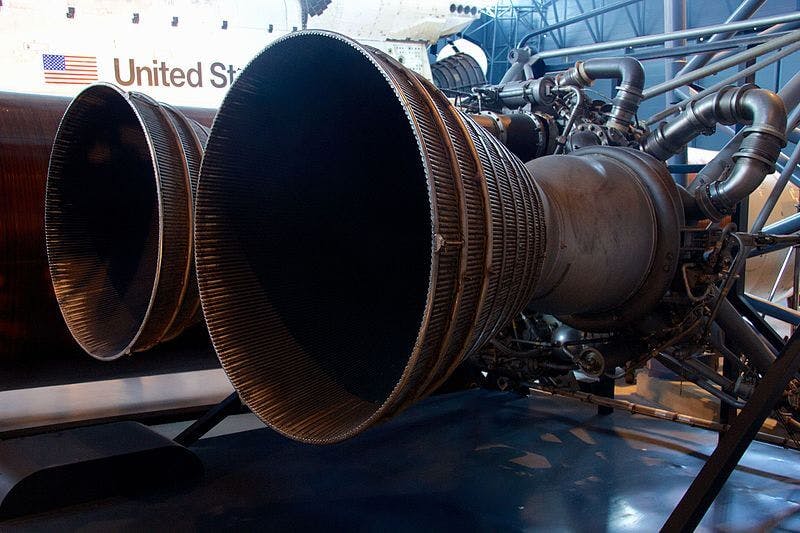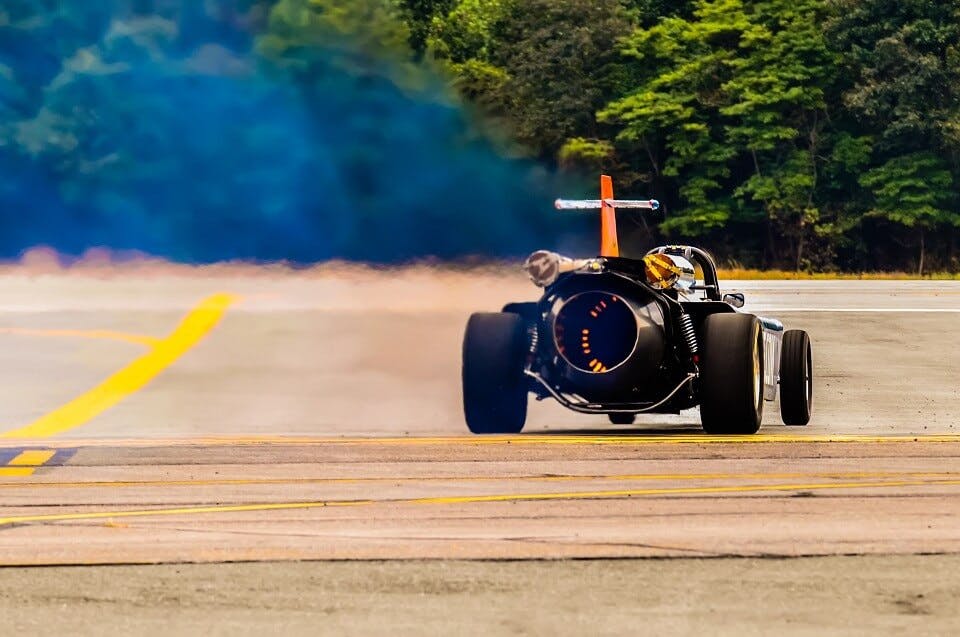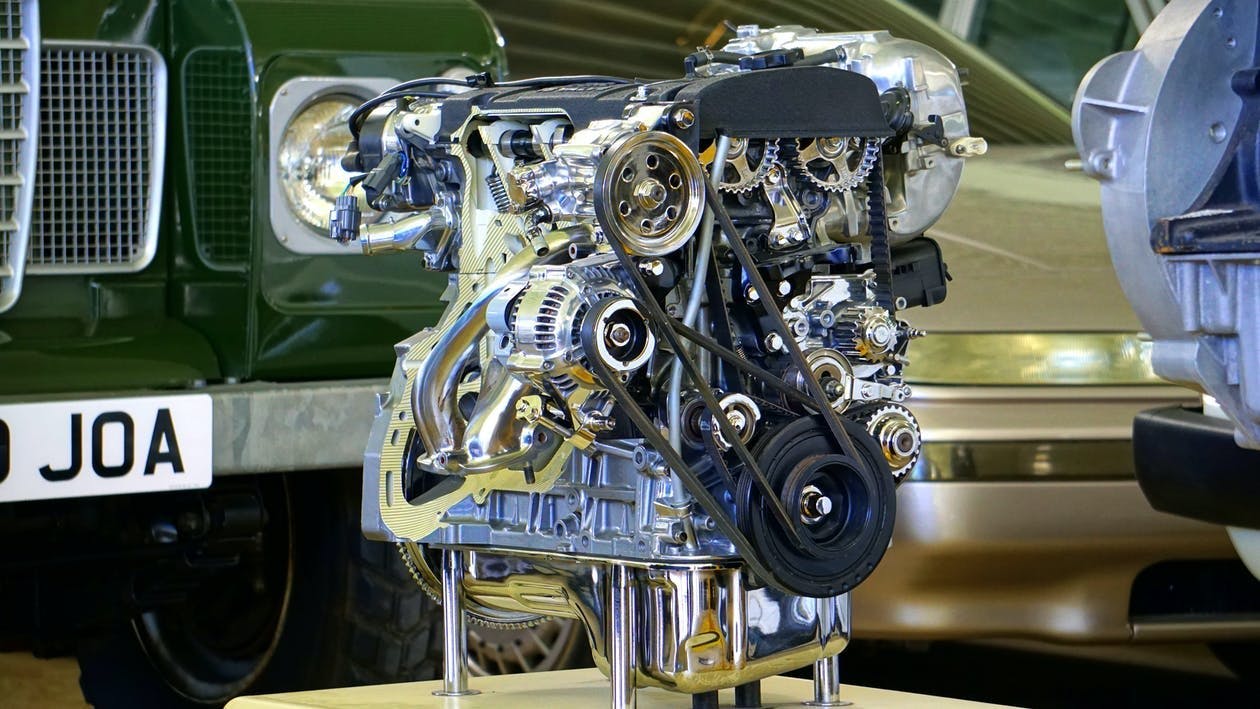Rocket engine: What type of combustion engine is it?

A rocket engine is a type of reactive engine that is not affected by the external environment, thanks to the fact that it carries fuel and an oxidizer in its reservoir.
This article will briefly examine how a rocket engine works, its history, and possible types.
Indholdsfortegnelse
Concept of a rocket engine
The concept of a rocket engine is quite straightforward. When the working substance (fuel and oxidizer) is burned, flue gases are created, which leave the combustion chamber through the engine's discharge nozzle at a very high speed.
As the exhaust gases leave the engine, they create a force based on the law of action and reaction and, therefore, based on the law of conservation of momentum of Newton's 3rd law - the body moves in the opposite direction to the direction of the outflow of exhaust gases.

Reaction engine: Did you know what type of engine it is?
Simply put, the machine to which this engine is attached is driven in the opposite direction that the exhaust gases leave the engine discharge nozzle. The effect of the exhaust gases leaving the engine discharge nozzle is called the rocket engine's thrust. It is directly proportional to the product of the mass of the exhaust gases and their exit velocity.
How does a rocket engine work?
The explosion of the working substance takes place under great pressure. The fuel and oxidizer are compressed in the combustion chamber. A narrowed discharge nozzle leads from the combustion chamber, thanks to which the speed of the discharge of flue gases increases. However, the nozzle cannot be too narrow so that the material from which it is made does not become thermally overloaded (melt).
The basic difference between a rocket engine and other internal combustion engines is that a rocket engine does not draw oxidizer from the atmosphere during its work, but has, in addition to fuel, a supply of oxidizer that it carries with it. Because this engine carries its energy source, it can also work in outer space (vacuum).

Petrol and Diesel Engine: How do they differ?
Another difference is that the machine, powered by a rocket engine, is not powered by mechanical work, as with spark or diesel engines that power cars, but by the reaction effect of exhaust gases.
In addition, except for some auxiliary systems such as the pump, nozzle rotation, etc., the rocket engine does not contain moving parts necessary for ordinary combustion engines (pistons, crankshaft, camshaft, and other components). Thus, the rocket engine has a special position among other combustion engines.
Rocket engine operation in a nutshell
- It does not draw the working substance from the atmosphere
- The useful output of the engine is not mechanical work, but the reaction effect of the exhaust gases
- Apart from some auxiliary systems, it does not contain moving parts
Based on the state of the fuel, rocket engines can be divided into two categories: engines with liquid and solid fuel.
Liquid propellant rocket engine:
A liquid propellant rocket engine is powered by a mixture of fuel and oxidizer in the combustion chamber. The working substance is thus mixed in the combustion chamber, where it ignites under high pressure.
Combinations of fuels and oxidizers for liquid propellant rocket engines:
The oxidizing agent does not always have to be oxygen; it can also be other molecules with excess oxygen, such as liquid hydrogen or hydrocarbon mixtures. The most common combinations of the working substance are:
- Liquid hydrogen and liquid oxygen
- Liquid oxygen and kerosene
In addition to these combinations, other fuels and oxidizers are used, and each combination has advantages and disadvantages.
Solid propellant rocket engine
A rocket engine powered by solid fuel is powered by a fuel mixture in the form of grains, which contain an oxidizer in addition to fuel. The working substance of this engine is stored in the combustion chamber. The advantage of solid fuel engines is excellent storability and readiness for use. On the other hand, a big disadvantage is that this type of engine cannot be turned off.
The first ignition of the working substance starts the entire reaction, which ends only when the working substance is not completely exhausted. That is why this engine is most often used as an auxiliary take-off engine for shuttles or airplanes.
Hybrid rocket engine:
It is a rocket engine in which one of the components, either fuel or oxidizer, is in a liquid state, and the other component is in a solid state.
A rocket engine is mainly used to propel:
- military rockets
- space rockets
- space shuttles
- satellites and space probes
- airplanes
- as an auxiliary, starting engine of airplanes
Even if the rocket engine is not used to drive cars, there were a few crazy people who equipped their vehicles with this type of engine, which you can read about in our article: The reaction engine: Did you know what engine it is?